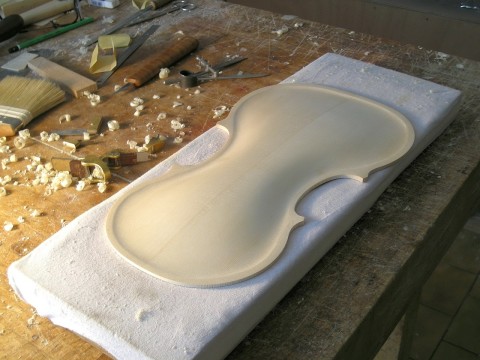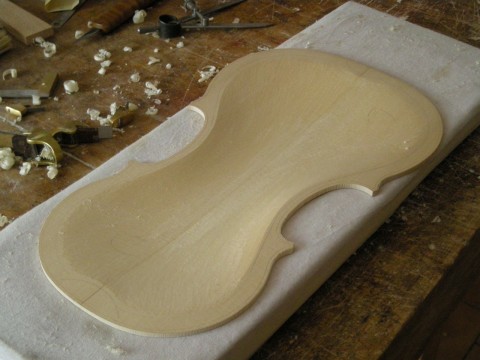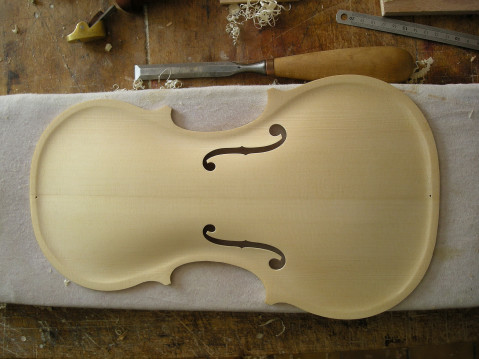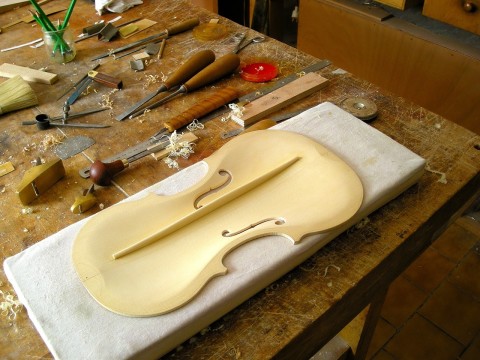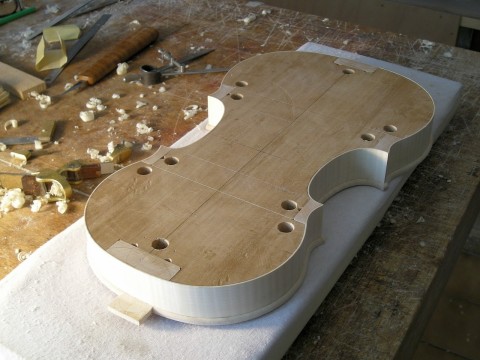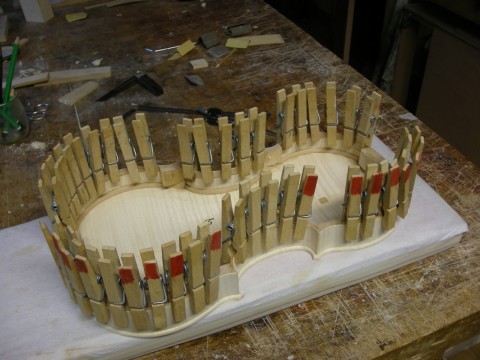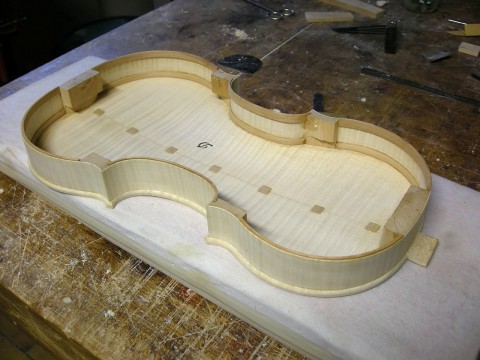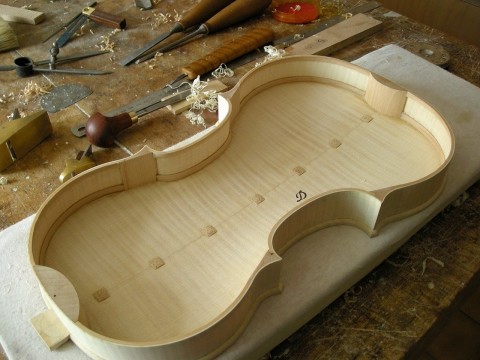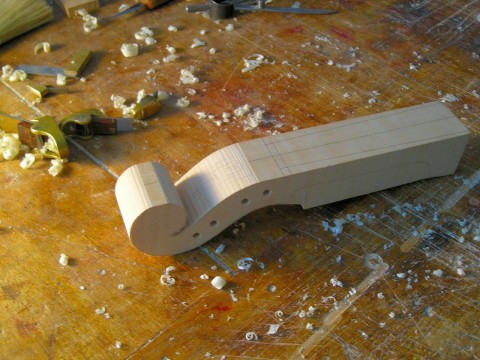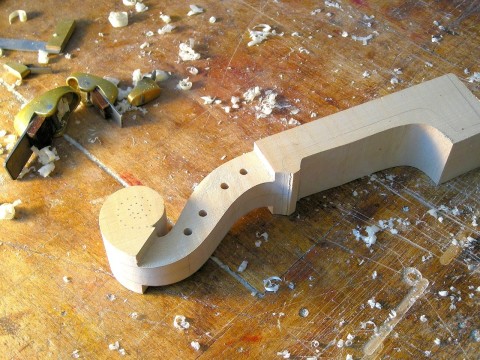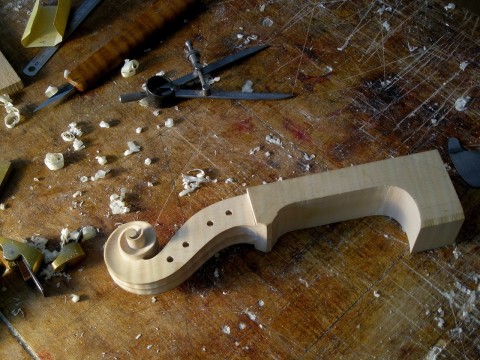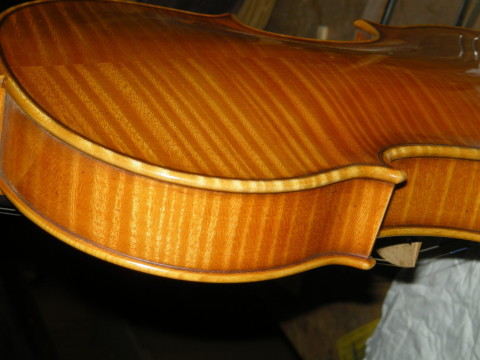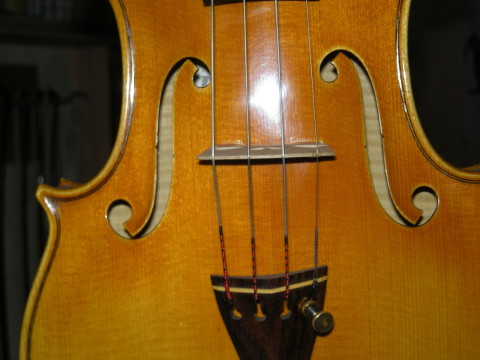
SERGE DRIJAKOFF LUTHIER
VIOLIN AND VIOLA MAKING
Maintenance, repair and restoration.
Models from: Antonio Stradivari, Andréa Amati, Guarneri Del Jesus
The violins of Serge Drijakoff are entirely handcrafted, in a traditional way, the process of which has not changed since the 16th century.
A few words about the making of the violin,
or the viola which does not differ in any way from that of the violin except the size of the instrument.
The violin is made of an assembly of 72 pieces of wood by gluing, excepted for the bridge, which is kept on pressure by the strings of the violin on the soundboard. The choice of woods for the violin making is esssential. Contrary to popular belief, a very old wood does not mean that it will make a good violin, no!
Things are much more complex. Factors such as altitude, area of growth, exposure to wind and sun come into play. A piece of spruce or maple intended for the violin making requires a natural drying of at least 7 to 10 years. It is also necessary to take care of the method of storage which will make it possible to stabilize as much as possible the humidity rate of the wood until to the making of the violin. Finally without going into too much detail, the density of a wood intended for the violin making is important, and this is a factor that must also be taken into account. 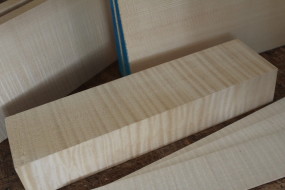
The violin spruce soundboard and the maple back (with flaming or not), are solid woods carved by hand, in the mass, using small planes and gouges. The soundboard is used for its relative lightness and its sound conductor properties, while the back, more dense, acts as a sound reflector. The soundboard pierced with its "ff holes" and the back of the violin are glued to the rib belt. The strength of the rib belt is ensured by the gluing of the four corner blocks near the "CC"(the two center bouts of the violin), top and bottom blocks and rib linings ( rib linings: small strips of wood 2 mm thick glued inside on the upper and lower parts of the ribs to ensure a sufficient bonding surface on the rib belt ) , thus constituting the sound body of the violin, so called "the box" by luthiers.
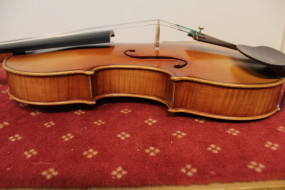
Inside the "box" two fundamental pieces of wood, contribute to the sound of the violin. They are: the sound post and the bass bar. The sound post is a small cylindrical piece of spruce with a diameter of about 6 mm. This small piece of wood is inserted with a slight pressure into the "box" located slightly behind the right leg of the violin bridge. It mechanically links the soundboard and the back of the violin and its function is to allow the phase displacement of the sound board and the back of the violin to resist the pressure exerted by the treble strings on the bridge and also allow the subtle adjustment of the high frequencies of the violin. The bass bar is a long piece of spruce w ood about 270 mm long, 5 to 6 mm thick and about 10 to 12 mm high towards the "ff holes" which goes in tapering towards the ends. The bass bar is glued, not strictly in the direction of the grain of the wood but slightly at an angle, on the left part of the violin soundboard, passing under the left foot of the bridge. The violin bass bar provides resistance to the pressure exerted by the bass strings on the bridge and allows the correct distribution of the low frequencies of the violin.
And finally comes the making of the maple neck of the violin surmounted by its "volute", then the hollowing out of the peg box and the gluing of the neck on the violin box who thus complete the making of the instrument, without omitting of course the gluing of the ebony fingerboard.
Finally the phase of a delicate work, varnishing (see THE VARNISH)
See below a few steps of the violin making
